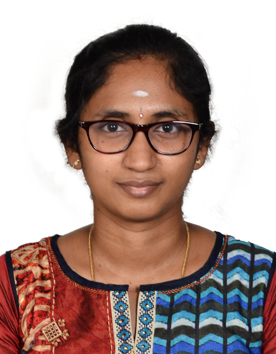Profile
Dr. Janani Radhakrishnan completed her M. Sc. (2011) in Biomedical Science (5 year integrated) from Bharathidasan University, India and secured first rank. She pursued Ph.D. (2017) as DST INSPIRE Junior & Senior Research Fellow, at the Centre for Nanotechnology and Advanced Biomaterials (CeNTAB), SASTRA University, Thanjavur, India. She has been awarded Founder Chancellor’s award for Best Ph.D. dissertation of year 2017 for sciences at SASTRA University. During her PhD, she had short-term international visits to Tokyo City University, Japan and University of Connecticut, US. Further, she worked at Indian Institute of Technology Madras (IITM), Chennai as postdoctoral fellow (2018-2020). She has been awarded with the prestigious DST INSPIRE faculty fellowship from December 2020. She has two Indian patents granted and publications in top biomaterials journals. She has joined NIAB as Scientist in August 2022.
Current Focus Areas
Biofabrication of organotypic constructs using 3D bioprinting technology for regenerative medicine and tissue models.
Multi-scale porous 3D constructs for bone tissue regeneration and disease modelling.
Development of 3D printable constructs for chronic wound healing
Selected Publications
Valappil S, Mohan I, Radhakrishnan J*, Ayyadurai N*. Building Biomaterials through Genetic Code Expansion. Trends in Biotechnology, 2022. DOI: 10.1016/j.tibtech.2022.07.003. [SCI, IF: 17.3] *Corresponding authors.
Radhakrishnan J, Muthuraj M, Gandham GSPD, Sethuraman S, Subramanian A. Nanohydroxyapatite-Protein Interface in Composite Sintered Scaffold Influences Bone Regeneration in Rabbit Ulnar Segmental Defect. Journal of Materials Science: Materials in Medicine, 2022; 33: 36. [SCI, IF: 3.7]
Radhakrishnan J, Manigandan A, Chinnaswamy P, Subramanian A, Sethuraman S. Gradient nanoengineered in situ forming composite hydrogel for osteochondral regeneration. Biomaterials, 2018; 162: 82-98. [SCI; IF: 14]
Radhakrishnan J, Subramanian A, Sethuraman S. Injectable Glycosaminoglycan – Protein Nano– Complex in Semi–Interpenetrating Networks: A Biphasic Hydrogel for Hyaline Cartilage Regeneration. Carbohydrate Polymers, 2017, 175: 63-74. [SCI; IF: 11.2]
Radhakrishnan J, Kuppuswamy AA, Sethuraman S, Subramanian A. Topographic cue from electrospun scaffolds regulate myelin–related gene expressions in Schwann cells. Journal of biomedical nanotechnology, 2015, 11: 512-521.
